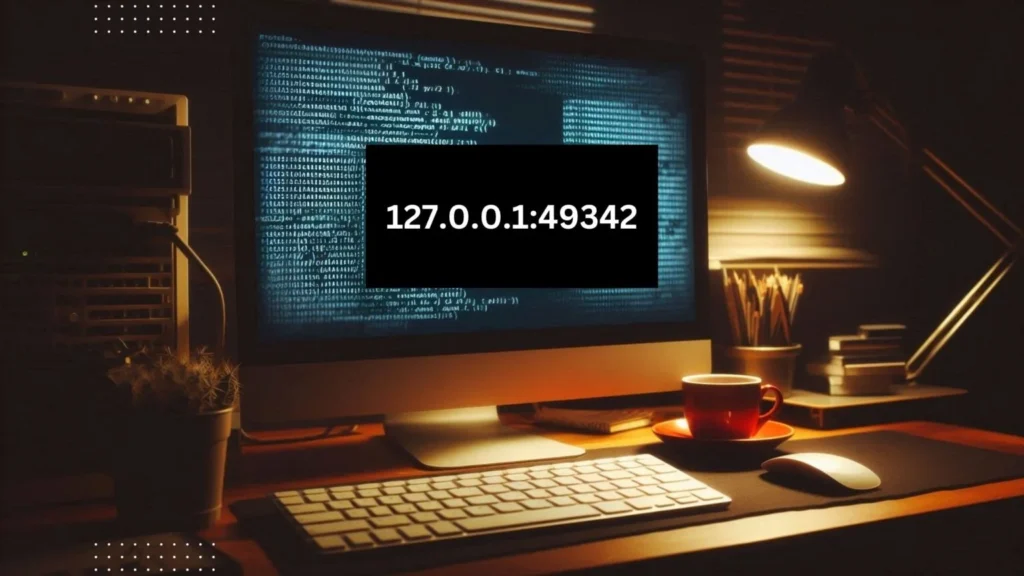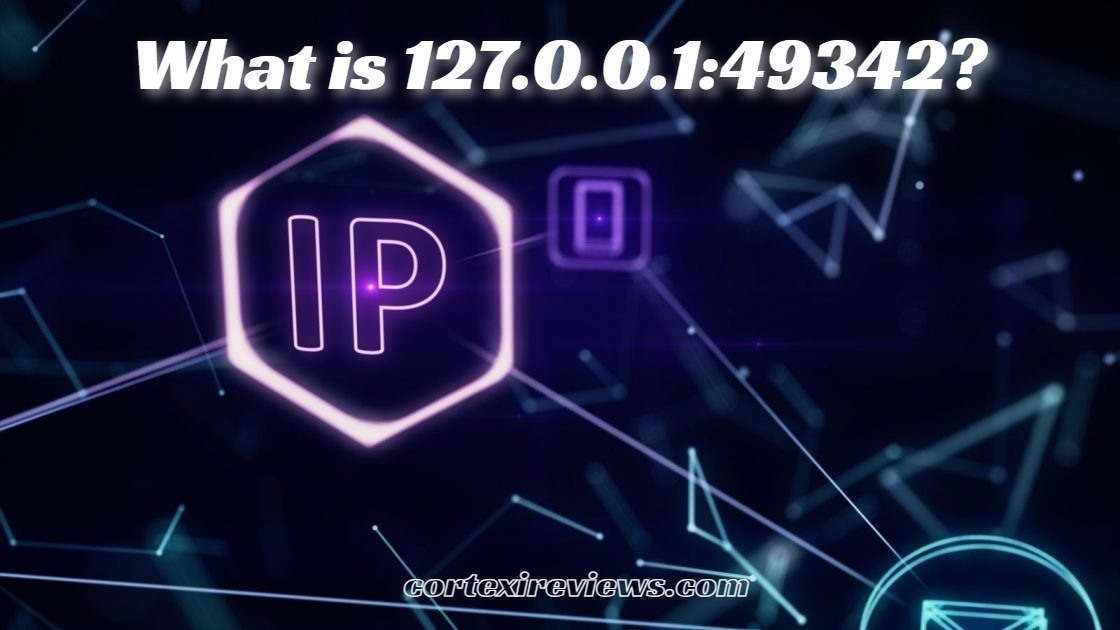Introduction
In software development, knowing how to interact with local servers and networks is critical. Another frequently used term by developers is “localhost: 127.0.0.1:49342.” Discover the importance of 127.0.0.1:49342 and learn how to use it effectively. This article provides insights into what it means, why it matters, and practical steps for leveraging it in your setup. We will explore what 127.0.0.1:49342 is, why it’s important, and how to use it effectively in various development scenarios.
What is 127.0.0.1:49342?
127. 0. 0. The string, 1:49342 is one of the local addresses that are developed in the software development environment of the software testing and development. It consists of two parts: the ‘host address’ as “127. 0. 0. 1” and the ‘port number’ as “49342”.
- IP Address (127. 0. 0. 1): Its name is the so-called “localhost” address. It means the device on which you are accessing this link at present. Said simply, It is like writing to oneself.
- Port Number (49342): This is a communication endpoint, the specification stated defines the places or the ways of ending communication. A port is a directed passage or channel that varieties with services and applications. An example of the randomly assigned port “49342 ” which is among the temporary or ephemeral port numbers (49152–65535) for local applications.
Understanding IP Addresses and Port Numbers
To fully understand 127. 0. 0. 1:49342, it’s important to break down its components:
- IP Address: An identifier given the a device on a network that makes the device discrete from other devices on the network. Use the IP address 127.0.0.1 for loopback, which connects with the same machine or computer at the network protocols level by iterating the IP.
- Port Number: Out of these, PORT NUMBER is a logical address that is used to identify a process or a service present in the device. When you request a service from a web server, your computer uses a specific port number to complete the request or in other words to point to the application that handles the task.
Here’s a simple breakdown of common port numbers and their uses:
| Port Number | Common Use |
| 80 | HTTP (Web Browsing) |
| 443 | HTTPS (Secure Web Browsing) |
| 21 | FTP (File Transfer Protocol) |
| 25 | SMTP (Simple Mail Transfer) |
| 3306 | MySQL Database |
| 49342 | Example of a Random Local Port |
Why Developers Use 127. 0. 0. 1:49342

Developers often use 127. 0. 0. 1:49342 As it provides a way to emulate a connected network locally the use and creation of such networks does not require exposing the application to other networks. This can be crucial for:
- Testing and Debugging: The use of applications locally assists in correcting problems without disturbing productive modes of operations.
- Developing Locally: It provides a platform to developers where they can experiment and create new features and products without putting the end-users at risk.
How to Use 127.0.0.1:49342 in Local Development
Using 127. 0. 0. Thus, it is quite unproblematic to trace the progression of 1:49342 in local development. Here’s how to get started:
- Set Up Your Development Environment: Download and install Apache or Nginx to use as a web server. If you need a database system for your applications, download MySQL or PostgreSQL. Install any other software tools required for your project development.
- Configure the Application: Go to your application’s settings and change the settings that will make it bind to 127. 0. 0. 1 and a special port for example 49342. This is almost always possible within the configuration files or environment for the application for each operating system.
- Run the Application: Open the terminal or command line of your development environment and begin your application. It should be now possible to connect to the application at, 127. 0. 0. 1:49342.
Configuring Your Local Environment
To effectively use 127. 0. 0. 1:49342, you need to ensure your local environment is configured correctly:1:49342, you need to ensure your local environment is configured correctly:
- Firewall Settings: Make sure that your firewall does not restrict access to the 127. 0. 0. 1 or the selected port or
- Network Configuration: To do this you should look at your network settings and make sure that your machine is properly configured to respond to loopback connections.
- Software Dependencies: You must deploy any OS libraries or dependencies that your applications may require.
Common Use Cases
Using 127. 0. 0. 1:49342 is common in several scenarios:1:49342 is common in several scenarios:
- Web Development: Using your local server to test websites or simply web applications.
- API Development: Testing of APIs in a local environment before making it live.
- Database Management: Handling databases safely as well as having the capacity to question them but not have them online.
- Virtual Environments: Isolate machines so that one project may require a different machine setup, while another project might fit within the same machine setup. Even if they don’t share the same physical space.
Security Considerations for Using Localhost
While using 127.0.0.1:49342 is generally safe, there are a few security considerations to keep in mind:1 is generally safe, there are a few security considerations to keep in mind:
- Keep Your Environment Secure: Since devices outside your local network can’t access localhost, ensure you protect your local environment with antivirus and a firewall
- Limit Access: Any program or service that requires the loopback interface should be allowed to access 127. 0. 0. 1.
- Monitor Ports: Check on which applications are using various ports on an ongoing basis so that an ideal setting is achieved to eliminate conflict and insecurity.
Troubleshooting Common Issues
Below are some of the possible problems and their fixes when using 127 when working with it. 0. 0. 1:49342:
- Port Already in Use: If in the course of the download, you experience an error that informs you that port 49342 is in use. You should either select another port or close the application presently adopting that particular port.
- Cannot Access Localhost: Ensure you have successfully installed and run your chosen application, and check the settings of the firewall or antivirus you are using.
- Connection Refused: Incorrect settings made while configuring the desktops could cause this issue. First, check that the IP and port settings in the application configuration files are correct.
FAQs About it 127.0.0.1:49342
Q: What is the difference between 127.0.0.1 and localhost?
Ans: It means that there is no difference. 127. 0. 0. 1 is the IP address for localhost, this is a hostname that gets translated to the loopback address.
Q: Can I use any port number with 127.0.0.1?
Ans: Yes, you can use the port number of any integer value between 0 to 65535. However, some of the ports are dedicated to particular services only. Port numbers 49152 through 65535 are most commonly used for dynamic or private ports.
Q: Why is my localhost connection refused?
Ans: This could be a result of improper configurations, a connection being blocked by a firewall or the web server not being running. You should use the command view server status and inspect your network settings as well.
Q: Is 127.0.0.1 secure?
Ans: Yes, 127. 0. 0. 1 is safe in the sense that it doesn’t put your application in a position to directly interact with other networks. However, it is important to save the local environment from possible attacks using updates and other protections.
Conclusion
Understanding and using 127. 0. 0. 1:49342 is extremely useful for developers who spend their time coding in local environments. You can effectively use this IP address and port number combination in test and development environments for debugging and developing applications and programs. By properly configuring and managing local servers, you’ll make the development process easier, and everything will be set when you reach the production stage.




